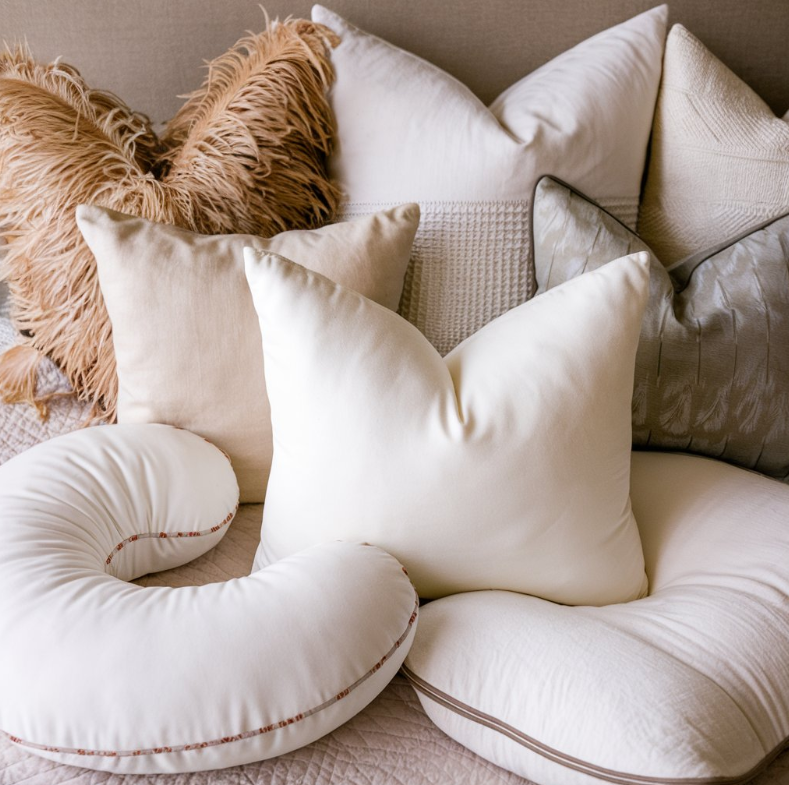Pillow Talk How to Elevate Your Sleep and Wellness
Are you tired of tossing and turning all night? The secret to a restful slumber may just be under your head. Introducing the concept of “grind on pillow,” an approach that emphasizes selecting the right pillow for better sleep and overall wellness. Whether you’re a sleep enthusiast, wellness seeker, or a new parent searching for that elusive good night’s sleep, understanding the significance of pillow selection and sleep posture is crucial. In this guide, we’ll explore how the right pillow can transform your sleep experience, offering valuable insights and practical tips to help you achieve sweet dreams.
The Science Behind Sleep
Sleep is not just a state of rest—it’s a complex process that involves various stages and cycles. The right pillow can significantly impact your sleep posture and overall comfort. Research shows that sleep posture affects the alignment of your spine, shoulders, and neck, which in turn impacts the quality of your sleep. A pillow that properly supports your head and neck can alleviate pressure points, reduce discomfort, and contribute to a more restful sleep. Understanding the anatomical aspects of sleep is essential, as it helps you appreciate why selecting the right pillow matters.
Types of Pillows
With so many options available, choosing the right pillow can seem overwhelming. Here’s a comprehensive guide to help you understand different pillow types and their suitability for various sleeping positions.
- Memory Foam Pillows are known for their ability to contour to the shape of your head and neck, providing excellent support and pressure relief. They are ideal for side sleepers who need extra support for their neck.
- Latex Pillows offer a natural, hypoallergenic option that provides firm support. They are durable and resistant to dust mites, making them suitable for allergy sufferers and those seeking a bouncier feel.
- Down and Feather Pillows are soft and fluffy, offering a luxurious feel. However, they may not provide sufficient support for all sleepers and are best suited for those who prefer a softer pillow.
Understanding the material, firmness, and best use case for each type will guide you in making an informed decision that aligns with your sleep position and personal preferences.
Choosing the Right Pillow
Selecting the perfect pillow involves considering several factors that contribute to your comfort and sleep quality. Start by identifying your primary sleep position—whether you’re a side, back, or stomach sleeper—as this influences the type of pillow you need.
- Material is another critical factor. Consider any allergies you may have and opt for hypoallergenic materials if necessary. The firmness of the pillow should also match your personal preference, offering the right balance of support and comfort.
- When testing pillows, visit a store if possible and try out different options. If shopping online, check for return policies that allow you to test the pillow at home. Remember, the right pillow can make a significant difference in your sleep quality and overall wellness.
Grind on Pillow Techniques
Incorporating the “grind on pillow” method into your sleep routine can enhance your sleep support system. Begin by evaluating your current pillow’s performance. Does it support your neck and head adequately? If not, it might be time to explore other options that align better with your needs.
Consider maintaining your pillows properly by fluffing them regularly to maintain their shape and support. Wash pillow covers frequently to ensure cleanliness, and replace pillows every 1-2 years to prevent them from losing their supportive properties. With these simple techniques, you can maximize the benefits of your pillow and improve your overall sleep experience.
Real-Life Experiences
Many individuals have experienced remarkable improvements in their sleep quality by adopting the “grind on pillow” technique. Take, for example, Jenna, a new mom who struggled with neck pain and disrupted sleep for months. After switching to a memory foam pillow that provided the right level of support, she noticed a significant reduction in pain and began enjoying uninterrupted sleep.
Similarly, Mark, a wellness enthusiast, found that using a latex pillow improved his sleep posture and eliminated the morning headaches he had been experiencing. These real-life testimonials highlight the importance of finding the right pillow for your specific needs and how it can positively impact your sleep and well-being.
Conclusion
Choosing the right pillow is not just about comfort—it’s about optimizing your sleep posture and enhancing your overall wellness. By understanding the science behind sleep, exploring different pillow types, and selecting the right one for your needs, you can experience the benefits of improved sleep quality. As you consider the “grind on pillow” technique, remember that a personalized approach to pillow selection is key.
To embark on your journey to better sleep, we invite you to explore the Doxfore5 range, designed to provide personalized pillow solutions that cater to individual preferences. Discover the secret to restful nights and rejuvenated mornings with Doxfore5.
Frequently Asked Questions
1. What is the “grind on pillow” technique?
The “grind on pillow” technique emphasizes selecting the right pillow to improve sleep posture and overall wellness.
2. How does pillow selection affect sleep quality?
The right pillow aligns your spine, reduces pressure points, and provides adequate support, enhancing sleep quality.
3. What are the best pillow types for side sleepers?
Memory foam and latex pillows are ideal for side sleepers, offering contouring support and pressure relief.
4. How often should I replace my pillow?
Pillows should be replaced every 1-2 years to maintain their supportive properties and hygiene.
5. How can I choose the right pillow for my sleep position?
Identify your primary sleep position and select a pillow that provides the right combination of support and comfort.
